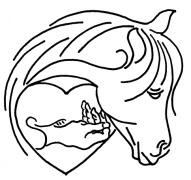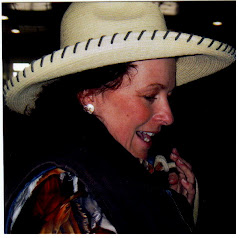
Last month I wrote about “Calmness Without Obedience Leads to Trouble”, however a horse who is NOT calm, who has NOT learned the art of relaxation will also cause difficulties that prevent the nice ride that dreams are made of. Either too much or too little calmness causes an imbalance in the horse which affects his performance and our safety.
At one end of the scale is a horse that is NOT calm, he moves quickly, and is reactive instead of responsive to our aids. Riders often turn to bigger leverage bits, and tie downs with this kind of horse. In order to achieve the correct balance a not calm horse must learn the skills of standing, waiting, and relaxing. If we don’t help a horse find enough calmness, where will control and precision for performance come from?
On the other end of the scale is the horse that is very calm but dull, slow, and boring. The rider usually needs spurs and whips to get much of anything out of this horse. To achieve balance this horse must learn the skills of moving faster, quicker and more respectful to respond. If we get a horse too calm, where will exuberance for performance come from?
While trying to fine the correct balance of calmness, just like people, horses often overshoot the mark by quite a lot before they find the middle ground where both precise control and exuberance can be seen in their actions. While we are trying to find this balance we can expect to see new problems pop up in the process of change. There will be cycles between one problem and its opposite, until the horse’s behavior gradually becomes less and less severe. As you make progress the horse will become more manageable and eventually he will settle into the middle ground of a harmonious balance. The horse will find this middle ground because harmony feels better than imbalance. Once we correctly address the extreme behaviors of no calmness and too much calmness the horse will start to feel better and his body will naturally seek this harmonious feeling.
I have been asking myself this question for several years now, “Where does calmness or relaxation originate?” Does relaxation always originate in the mind, or can it begin by changing the posture of the horse so that the body tells the mind to relax as opposed to just the mind telling the body to relax? I have come to the conclusion that it is both, because body posture can induce calmness/relaxation, and relaxation/calmness always induces body posture. So calmness can originate in the mind first or it can be a by-product of the physical.
I have also been studying Yoga the past year and I have learned all action starts with a thought first and that although it is important to become stronger and more flexible, it is just as important to train to learn to control the mind. Yoga poses are meant to help clear the mind of clutter by concentration only on the body’s new position - twisting, stretching or balancing. This induces a softer focus and a calmer mind. The physical effort of remaining in the pose for a few seconds or minutes stills the mind even further. Yoga poses should be carried out meditatively, rather than rushing from one pose to another. To my mind, this is the same attitude we should attempt to achieve when schooling a horse, both for the horse and the rider. When done in this manner (mind and body together) the proper balance of calmness between both the horse and rider can be accomplished in a shorter amount of time.
I have also discovered that there is a fewer number of people who can make effective use of this greater mental pathway. Because not everyone has acquired the ability to directly induce calmness/relaxation in themselves let alone their horses. To do this, one must get directly into the mind of the horse. When the mind is uncluttered and focused the body will follow with greater ease. The human must be able to hold onto this mental state himself, if he expects the same from the horse.
It is rather ironic how it does not seem at all difficult for humans to directly induce negative emotional states in horses, i.e. fear, confusion, resistance. It seems more rare for humans to consistently be able to directly encourage calm and a sense of well-being with a horse. Those who can are masters of their own minds and bodies and we admire them with awe. Those who have learned to reach this greater path have become true artisans of blending with a horse and they make everything look so easy. With determination anyone can learn to have the kind of soft focus and mental power necessary to shape the body. Champion athletes and successful business men and women do it all the time. They have learned to wait, remain composed in turmoil, and visualize with clarity and confidence a flawless appearance.
Besides the mental and emotional pathway to calmness/relaxation, there is also the physical path, which everyone has access to. Anyone can learn to properly work through physical maneuvers which help induce a state of calm and relaxation in the horse. Even if you think you are too uncoordinated or out of shape if there is a burning desire you will find a way. People with physical handicaps find creative ways to adapt to perform some amazing activities which those of us who are not handicapped think of as impossible.
Some physical maneuvers which help relax and calm a horse are: un-tracking, squaring a horse up, lateral bending, lowering the horse’s head, properly executed stretches, muscle massage, endo-tapping, and any activity that causes the horse to focus and pay attention.
A horse which has lost his calmness/relaxation has lost his “all-rightness” inside and even the path to it. It is the human’s job to step in there and get the horse to change, focus and come back to being 100% OK on the inside. This may be as simple as showing the horse where the trail is. Once the horse finds the trail again, he has an inner drive to return and remain in the trail or state of “all-rightness”. Once a horse has been shown the path to this “all-rightness” he will begin to voluntarily ask the human to help him and accompany him on the path to it. He will begin to go further down the path and hold it longer every time he is helped to find it again.
The bomb proof horse isn’t one who never looses his calmness. The bomb proof horse is a horse that lives for the place of “all-rightness”. When things come along which knock him out of his “all-rightness”, it is only a moment before he can return to “all-rightness” again. By contrast, the agitated and impatient horse that is always on edge of turbulence is knocked further from “all- rightness” every time the smallest knock comes along, and he even gets more and more lost the longer he is left in this state.
It is our job as horsemen to find a path to follow (preferably both the mental and the physical) because we cannot take the horse anywhere we have not been. I suspect the horse in many ways is already there waiting for us to catch up with him. This is one of the things I like the best about horses, they cannot be faked out. We must be genuine with them.
Whether you choose to work via the physical path, and thereby induce relaxation in the horse as a by-product of body posture, or if you use the mental pathway first, or if you use a combination of both the important thing is that we find a balance of not too much or not too little calmness. It has to be just right for optimal performance.













No comments:
Post a Comment